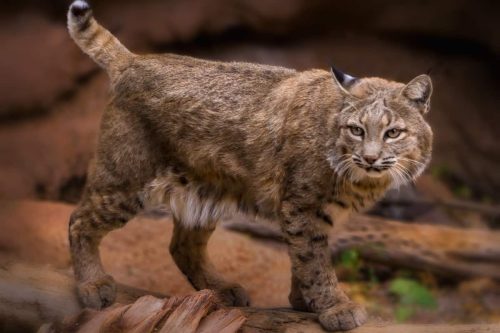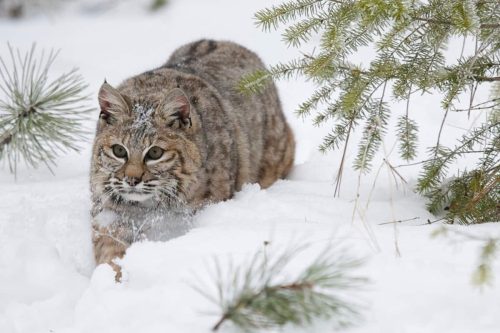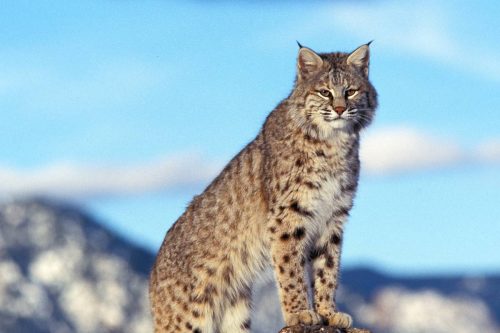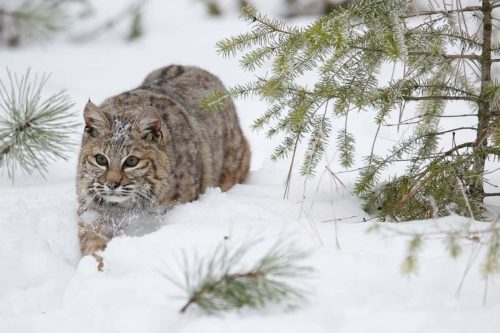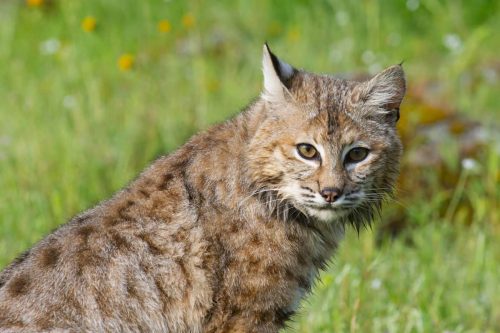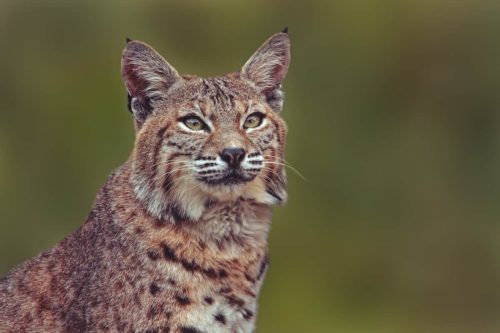Bobcats in Indiana: Exploring the Lives of Bobcats in Hoosier State
Bobcats are common and native wild species of most of the states of the USA. These cats are also the only native wild cat in Indiana state. Bobcats are sparsely available in every county but the population of these cats is increasing very rapidly in the southern, central, and northern parts of the state. Despite having a huge presence throughout the state of Indiana, you may rarely see bobcats in Indiana due to their stealthy nature and easy blending with the local environment. In this article, we are going to explain the Indiana bobcat in detail and clear all your confusion about its presence in the state.

Contents
Ecology of Indiana
Indiana or the “Hoosier state” is a state in the Midwest region of the USA and known for its many great lakes. Indiana state share boundaries with Kentucky, Michigan, Ohio, and Illinois on the south, north, east, and western side of the state respectively. Overall, Indiana is known for its very diverse geography of deep forests, rocky hills, grassy plains, riverbanks, and lakeshores. This kind of ecology is highly suitable for the long-term presence and conducive growth of bobcats in the state.
Are there bobcats in Indiana?

Yes, bobcats are available in Indiana State. In fact, bobcats are the only native wild cat in the state. Indiana has a very stable population of bobcats and the population is also continuously thriving very rapidly in the state. You can find bobcats in the central and southern regions of the state but the population is growing very rapidly in the northern side of the state as the habitat of northern Indiana is more suitable than other regions.
The Indiana Department of natural resources has done very deep research about the presence of bobcats in the state. They have found out that the bobcats could go as far as 100 miles away from their birthplace in search of food sources or better habitats. They have also deployed trail cameras for having an overview of day to day life of the Indiana bobcats. By doing this, they have also compiled a very comprehensive report on the fatalities of the bobcats.
See our article for Bobcats in Arkansas.
Where do bobcats live in Indiana?
Overall, bobcats enjoy the habitat of Indiana state. But they prefer some areas more than others. Bobcats like to live in deep forests, wooded areas, Brushy regions, and open grassy fields. They also prefer areas where they could easily find their prey. Male bobcats occupy much larger territory than female bobcats. On average, male bobcats cover 30 to 75 square miles while female bobcats cover 2 to 12 square miles. However, bobcat sightings in Indiana are very rare due to their elusive, stealthy, and shy nature.
Are bobcats protected in Indiana?
Bobcats were very few in number in Indiana State until 2005 when these cats enlisted as the endangered species of the state. Since then the population of bobcats in Indiana is growing very rapidly and now it has been enlisted as the species of the least concern in the International union for conservation of nature red list.
Indiana had a reasonable population of bobcats till the mid-1900s when it started declining due to habitat destruction and excessive hunting of these cats for commercial reasons. That’s why these cats were enlisted as an endangered species in 1969 and had been stayed on this list until 2005 when the population of the bobcats in the state again became stable.
According to IDNR, the population of the bobcat is now being managed and regulated in a very good manner and the matter of concern now is only the bobcat fatalities which mainly happen due to the large volume of vehicular traffic. Most of these fatalities of the cat happened in the southern regions of the state.
What do bobcats eat in Indiana?
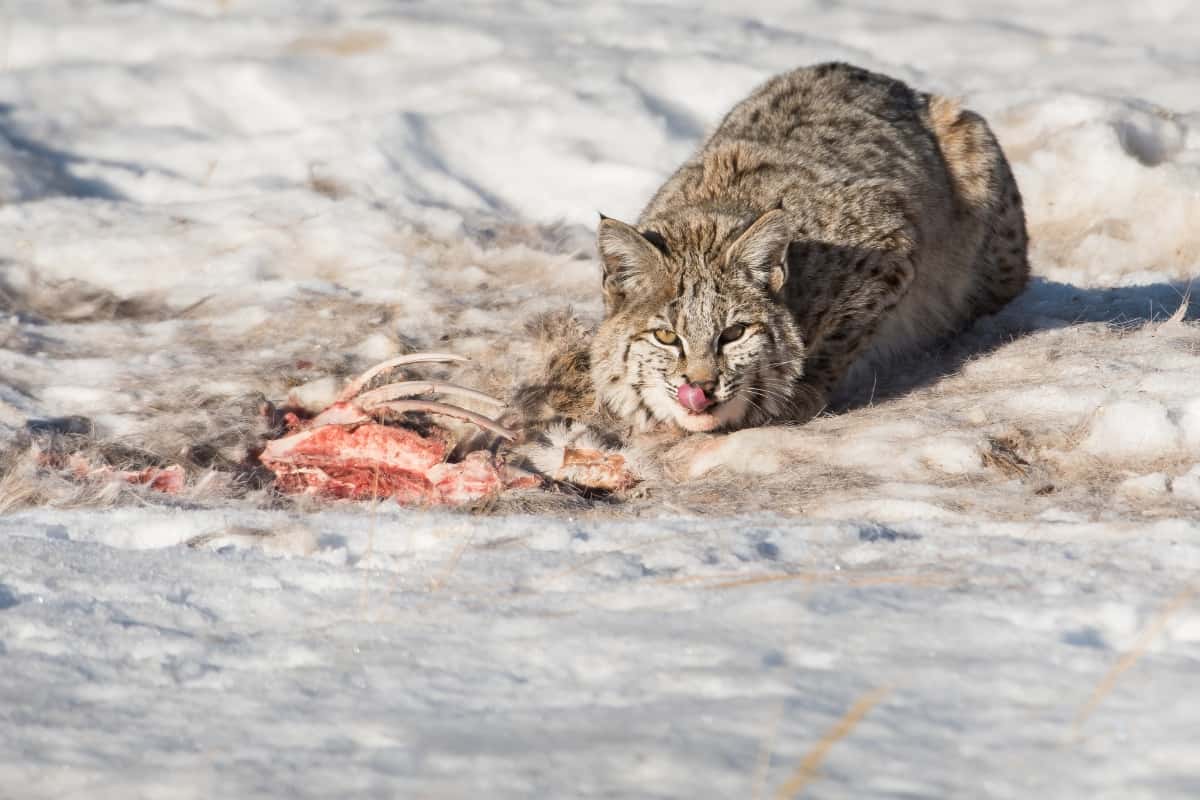
Bobcats like to eat a variety of small mammals. These cats stalk their prey and camouflage their presence and then suddenly ambush them at the most opportune time. In Indiana, bobcats mainly rely on animals like mice, voles, muskrats, squirrels, rabbits, whitetail deer, and waterfowl. When these cats are facing scarcity, bobcats also target large animals like skunks, raccoons, foxes, and poultry animals like pigs, goats, and sheep. Nevertheless, there are very few predators of bobcats. Some of them are mountain lions, cougars, coyotes, and wolves. Some other animals like bears, eagles, owls, and alligators also prey on bobcat kittens.
Hunting and trapping of bobcats in Indiana
Despite the resurgence of the bobcat population in Indiana state, these cats are still among the protected species of the state. It is not allowed to capture or kill bobcats freely anywhere in the state. The habitat range of the bobcat is continuously expanding and now these cats are available in almost 52 counties of the state.
The population of bobcats is recovering very rapidly but there are also some concerns about the safety of small pets and cattle as these animals are the secondary source of food for bobcats. However, there are no exact reports about the hunting of pets by bobcats.
Other newly recovered wild animals in Indiana
Some other wild animals are also recovering very rapidly in the state other than bobcats. All of this is happening due to conservation which was started almost three decades ago. Let’s have a brief look at some of the newly recovered wild animals in Indiana.
a) White-tailed deer
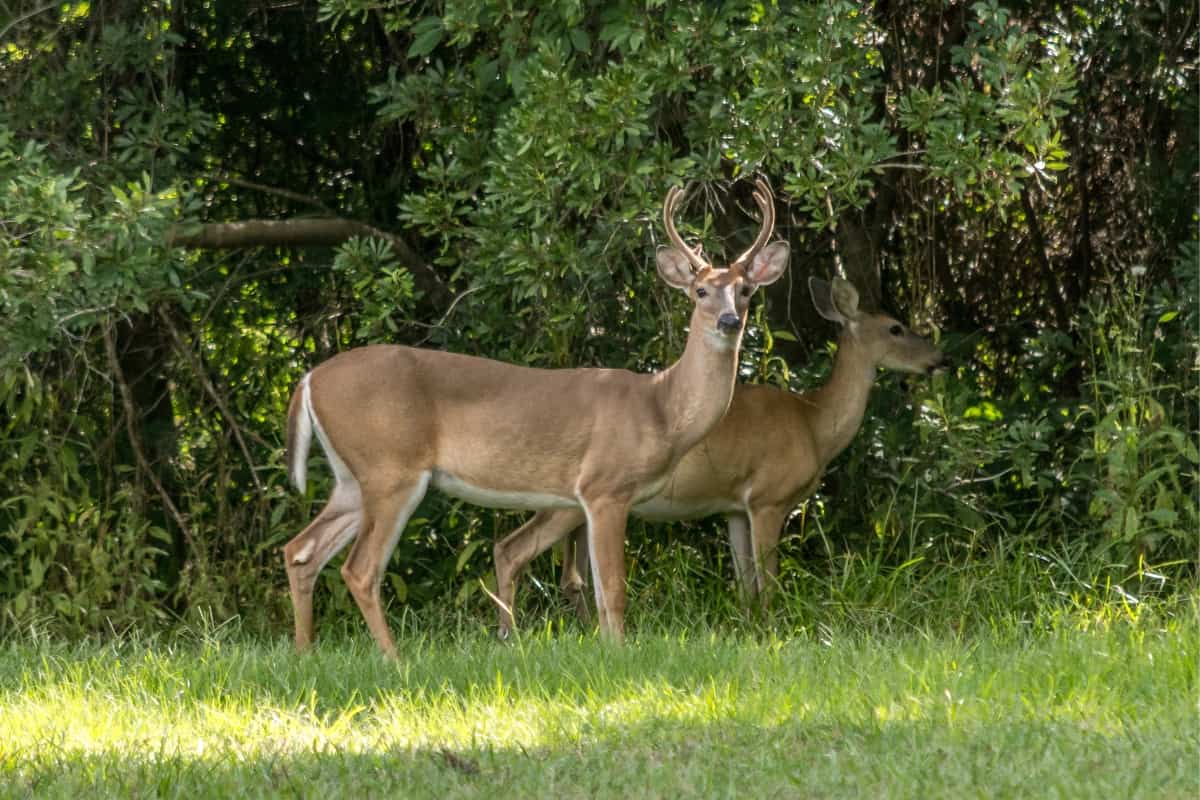
The white-tailed deer had been completely eliminated from the state two centuries ago due to excessive hunting and the destruction of the habitat. These white-tailed deer were reintroduced in the 1930s for conservation. It has been very successful as the population of deer is thriving very rapidly. It is still thriving very rapidly due to excellent management in terms of hunting seasons, equipment regulations, and bag limits.
b) Wild turkeys
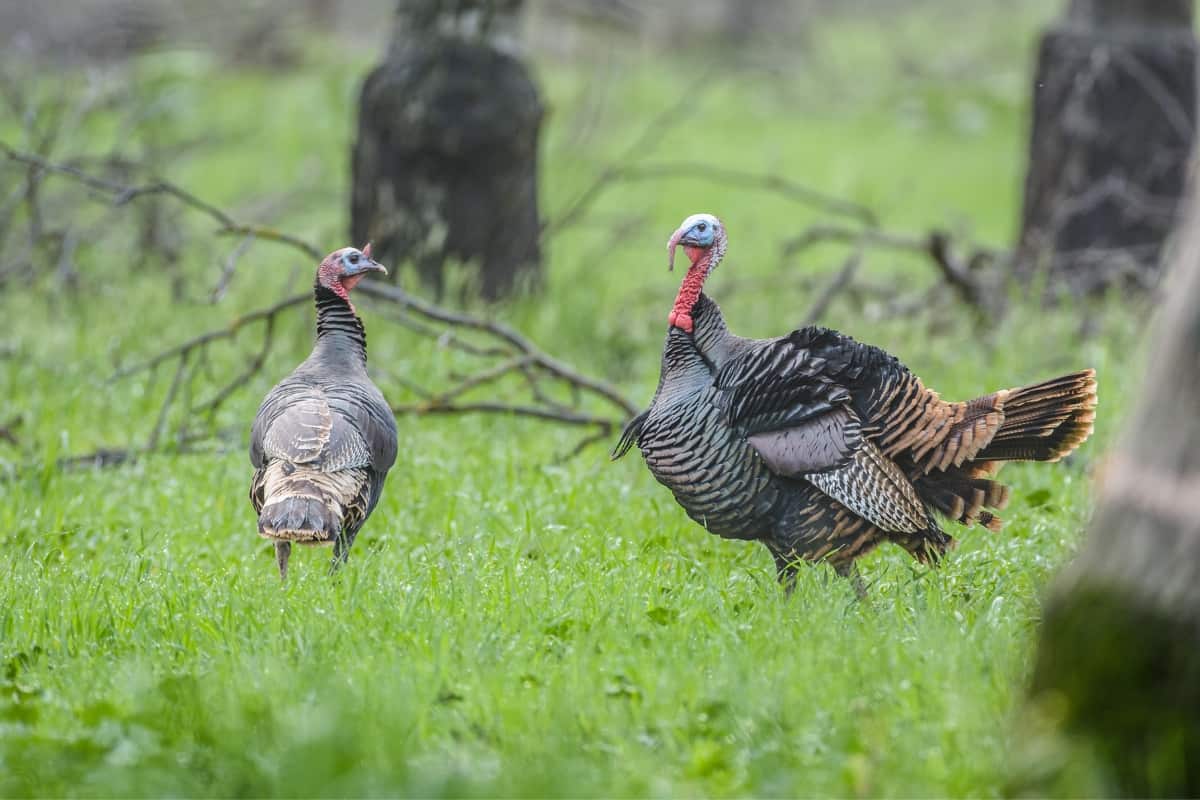
Wild turkeys have also been completely eliminated from the state due to overhunting and the destruction of habitat since the 1800s. These birds were reintroduced in the 1950s and since then these birds are recovering very rapidly. Now, you can find these birds in almost every county of the state, and the Department of natural resources of Indiana is also managing the hunting season.
c) Peregrine falcons

These falcons had been completely wiped out from the state in the early 1900s. In 1991, the Department of natural resources freed 15 young peregrine falcons in the Indianapolis region. Now the population of these falcons is quite stable in the state.
d) River otters
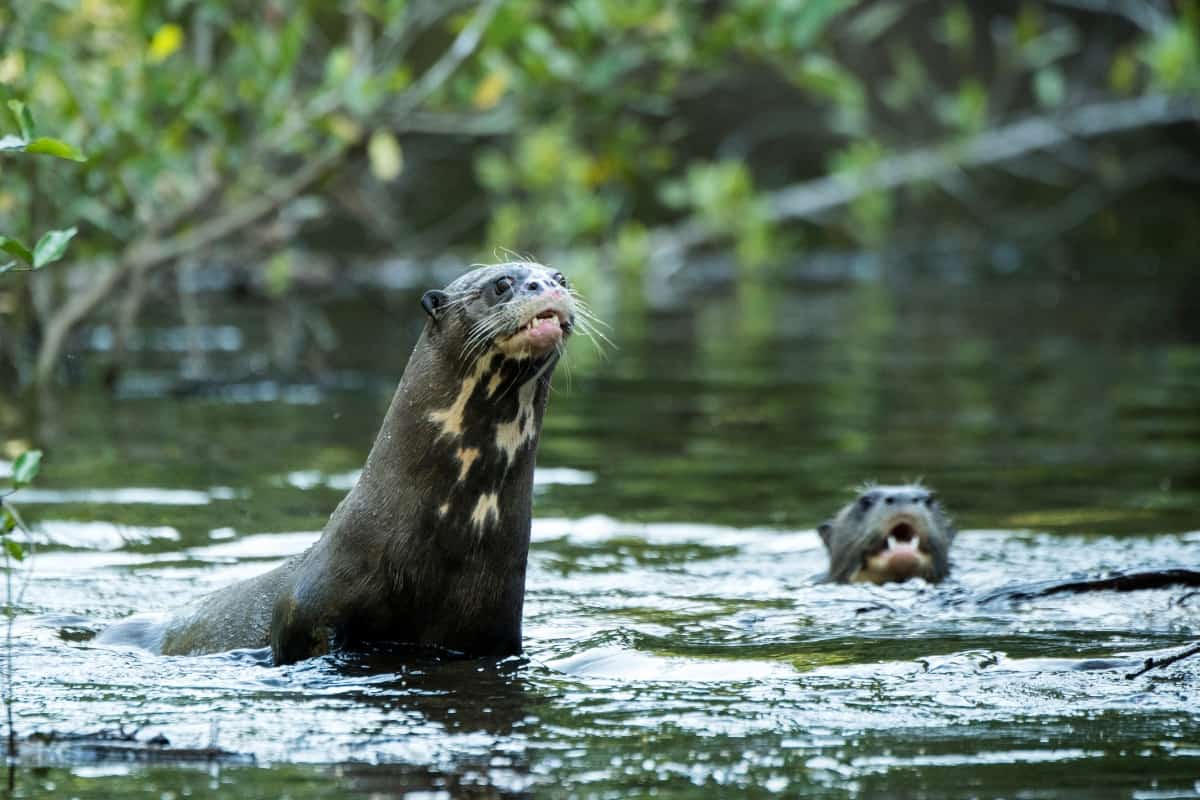
In the early 1900s, it was estimated that the river otters were completely eliminated from the state. In 1995, 300 river otters were picked up from Louisiana and these cats were reintroduced in Indiana state. Now, Indiana has quite a stable population of river otters and you can witness river otters in almost 80 of 92 counties of the state. The population has become good enough that the Department of natural resources has again given permission for the hunting and trapping of these wild animals in the state.
Frequently asked questions
Conclusion
When it comes to the wild cats of Indiana, then bobcats are the most prominent wild cats in the state. These wild cats have the largest population in the state. The population of these cats is continuously thriving very rapidly. It exists in almost every county of the state. Some other wild animals like otters, peregrine falcons, and river otters are also recovering very rapidly due to conservation efforts. People are also reporting the presence of some other big cats in Indiana.

